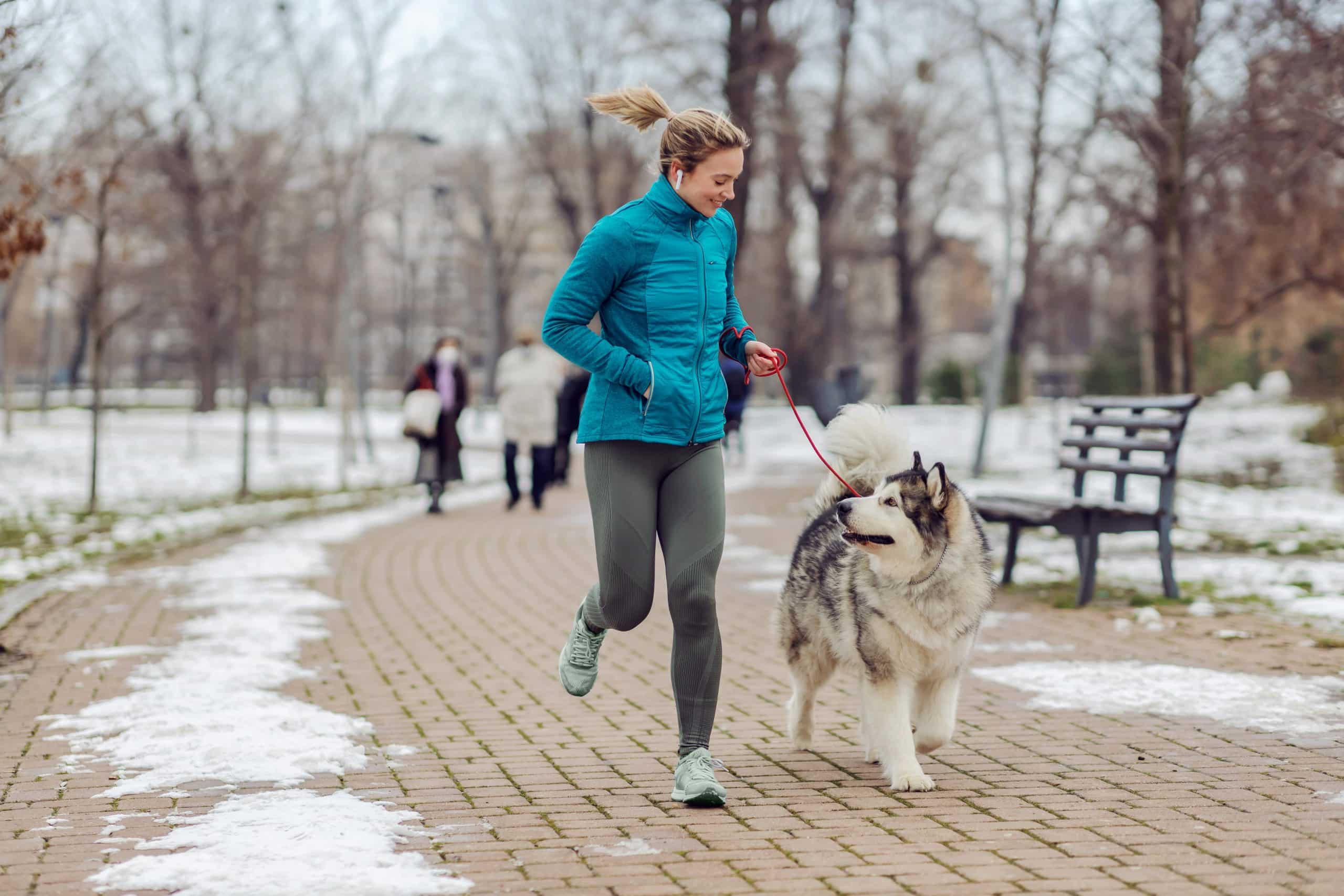Summer is off. For many jogging admirers in northern climates this means one thing – no more running for at least the next couple of months. You pack away your best winter running clothes and till the days once again become longer and warmer. That said, there really is no need to take a big pause, sit in the cozy warm house, and look at the snowflakes floating in the air. You may glare at them and reminisce about the time when you enjoyed that energetic run around the lake during warm summer days. Do not get frustrated that quickly because if running is your jam then you can still hit the road even in cold weather. With that in mind, you should prepare better for winter running because you don’t want to get ill, right? Preparation means not only the desire to get outside in the less comfortable temperature but also some suitable winter jogging attire and shoes. Last but not least – prepare to run less since a long run during cold temperatures will not give you any benefit at all, especially if you are an amateur at running in the cold. If you are pondering how to prepare yourself for jogging in the winter and want to discover the benefits of running in the cold then this article would be a good fit. Get sportive with cold weather jogging – an excellent way to get invigorated during winter.
Is It Ok To Jog In Cold Weather?
Do you remember your mother not allowing you to take a quick run outside with your friends because snowdrifts covered the path? As kids, our parents deprived us of a lot of activities because of cold weather. Our parents were partially right, indeed because doing activities in cold weather takes a lot of preparation.
Running in cold weather is a good idea for people who desire to burn calories, stay fit and boost their vitamin D exposure. On top of that, you literally have more space to run because even the most ambitious runners feel too lazy or reluctant to face the cold temperatures. There are so many other things people can get into during winter: take walks, tidy up their houses, or even work out online (1).
Nonetheless, if the cold weather is not an obstacle for you, then all you have to do is to make a few adjustments to get the winter running challenge. Before we jump into the preparation process it is essential to acknowledge the cold weather jogging benefits so that you could have a clearer idea of what it is, before setting any running goal:
- You get your aerobic activity increased. When you jog in the cold temperature you get more aerobic exercise. Centers for Disease Control and Prevention indicate that adults need on average 150 minutes of moderate-intensity aerobic activity or 75 minutes of vigorous-intensity activity per week (6).
- You get your metabolism more activated. Due to cold weather, you rev up your metabolism which leads to body composition changes.
- You burn more calories. According to a study in 2014, men who were running in cold weather for a month increased the amount of brown fat, which burns calories instead of white fat that stores them (3).
However, running in cold weather will not benefit people who have cardiovascular diseases since doing active movement during cold temperatures can cause blood pressure to rise (2).
Well-prepared sports attire is important because people who spend a lot of time in cold temperatures are more susceptible to the risk of hyperthermia. Due to hyperthermia, our body loses heat which leads to a lowering of our temperature.
In addition, you should be careful with your lungs since cold and dry air can stress them. This concerns especially those runners who neglect to breathe accurately during jogging.
Clearly, winter running is an excellent way to jazz up your sports routine in winter and activate your body. However, you should carefully select the cold weather jogging suit and shorten the time of exercise. Instead of 1 hour opt for 30 to 40 minutes. If you are a beginner then 20 minutes will be just fine. Further in the article, you are going to find out tips on how to prepare for cold weather jogging and what attire to don to get the most out of your winter run.
Read More: Negative Splits Running – Start Slow, Finish Fast
At What Temp Is Too Cold For Jog?
As many of us know, running itself is loaded with necessary benefits. That is why people strive to wake up and start the day with a nice run or take a quick round after work. Running improves sleep, lowers the risks of heart diseases, enhances memory, and boosts the general quality of life (5).
Jogging enthusiasts or even amateurs find no problems jogging in cold weather. Even more, they find it much more challenging and invigorating. It is okay to run in cold temperatures for a healthy adult who faces no temporary or chronic conditions. However, some temperatures might be irritating or even dangerous for your overall being.
You might as well skip the outdoor run if the temperature outside is 20 degrees or colder. In this case, you should better opt for treadmill or bodyweight workouts at home. It is also not recommended to jog when freezing rain is drizzling outside. That would automatically lower your body temperature and you might catch a cold.
But if even freezing cold doesn’t scare you and you can’t help lacing up your shoes and getting outside for a quick run, then pay attention to the following tips:
- Check the weather forecast. Yes, we all know that some forecasts can be not reliable enough but not in all cases. Look at the temperature at the time you will go for a run and whether there will be any snow or rain.
- Do not overdress. Layers are your best option. Once you feel like it’s too warm for you you can take off one layer and if you get chilly then put the layer back on. Your layers should be wicking and breathable so that they would trap the heat, not sweat (7).
- Do warm-ups. Any workout can’t be effective enough without a 5-10 minute warm-up. You can do squats, lunges, jumping jacks, and swing with your hands which is going to activate your body and prepare you for a sprint.
- Wear reflective clothing. This is especially true for runners who choose busy roads. The drivers will have a hard time seeing you if the weather is gloomy or grey outside. Reflective tape on your sports attire might look silly but keep you out of danger.
- Drink water. There is a weird misconception that our body needs less water in cold temperatures. But never mind the temperature outside we do lose energy while jogging in the cold and hence we need to fill up the energy by gulping down water. By the way, try to use warm water instead of cold. You don’t want to end up with a sore throat.
- Stay safe. Tell your relative or friend where you are going to be running. Weather can be unpredictable as well as road conditions. If you slipped on the path or faced another problem you could immediately call them.
- Take the charged phone. This may sound silly but as we all have noticed, our phones can betray us in the most needed moments and it is all because we forgot to charge them. Please, charge your phone before any jog, especially in the cold weather.
- Should you feel the pain – stop jogging. Don’t continue the run if you feel dizzy or your chest hurts. If you push yourself more it won’t help you lose an extreme amount of calories and you can end up with horrible consequences.
As you can see, running in the cold is possible for every healthy adult. However, if the temperature drops to 20 degrees or more, you should consider indoor activities. Even if you still desire to run in freezing cold then take the preparation process seriously which means choosing reflective, comfy, and sweat-wicking clothing, cleats, or any other shoes that would help you not slip on the road. And most importantly, stay hydrated.
Want to build an attention-grabbing bubble butt, blast away fat that’s stored in all the wrong places, spring-clean your diet, turn back the clock on your skin, skyrocket your self-confidence and shatter your insecurities? Check out the BetterMe app and set this plan in motion!
How Do I Start Jogging In The Winter?
Some people prefer winter jogging for one specific reason – it is more challenging and you can get more privacy since fewer people are on the tracks.
Let’s imagine you have decided to perk yourself up by doing a jog in winter. You might have no idea what to start with but here is a simple answer – jogging clothes for winter. Yes, sports attire in general is important. Without the appropriate set, you won’t get the hang of any physical activity effectively.
Running clothing is especially important during the cold weather jog because at first we get cold, then after the warm-up, we preheat our body, and finally, we sweat. That said, here is the list of sportive attire you should pick when you jog in cold weather:
- Base layer. Choose long-sleeved shirts with breathable and wicking fabric. This will help you pull sweat away from your skin. The best options for you would be Merino wool, nylon, polyester, and Lycra. Cotton is not okay here since even though it absorbs moisture it doesn’t wick it away (8).
- Outer layer. You can pick an insulating, soft jacket that preserves heat. The second layer depends on the temperature outside. The fleece item or half-zip will work just fine (8). The waterproof or water-resistant jacket might also be a good option for you. Preferably with pockets where you can stash your gloves and your phone.
- Socks. Cotton socks are not a good option. You should buy wool socks that will wick away moisture and keep your feet dry and warm.
- Running hat. You need to keep your head covered during winter running. There are hats made of moisture-wicking material that keeps your head dry. The wool hat is a bad idea because it can lead to excess heat and sweating. Also, hats can protect your ears from frostbite.
- Running tights or pants. It is better to pick running pants or long leggings. On top of that, tighter clothing can help you avoid chafing. There are runners who prefer fleece-lined leggings to run in.
- Jogging shoes. You can even wear the shoes you use in warm weather. But if you run on snow or ice then you might want to opt for shoes that have enough traction so you don’t slip when it’s slippery from snow, rain, or ice.
- The skin-protective sunscreen. When it is sunny outside, no matter during winter or summer we need to use skin protection. In this case, you can apply sunscreen with an SPF of at least 30.
Now you are aware of what clothing to choose. After purchasing the cold weather jogging attire you should follow a few simple steps in order to commence your cold running experience with pleasure:
- Drink before, during, and after the run. Water is essential and it gives us the energy to do a lot of things. Stay hydrated during jogging in the cold, even if you feel no desire to. Your body will crave water every time, so don’t neglect it.
- Stretch out and warm up. Before you go outside and start to run, make sure you stretch out at home and perform some warm-up exercises. In this way, you give your body a hint that it should be ready for some physical activity.
- Start slowly. As far as you can tell, the weather is fine and the forecast shows no rain or snow whatsoever. Then you walk outside and don’t jump into a sprint but start your jogging with a quick walk. After a couple of minutes of fast walking, you can enter the running stage.
- Track your powers and not time. Setting a certain time is not a good idea especially when you are a beginner. Just get the hang of everything and there is no point in setting 20 or 30 minutes. Instead run as much as you can and reduce the pace if you feel pain in your chest, knees, or other parts of the body.
- Finish fast and change your clothes. When you finish the run don’t switch to a slow stroll but quickly head to your house instead. There, change your suit to something fresh and warm. Try to stretch a bit after changing clothes because stretching can help us relieve the tension in muscles.
- Make it a habit. Don’t jog every day. That is going to exhaust you and as a beginner, you will feel no joy from it. Plus, it might harm your muscles. Let your body adjust by jogging 3-4 times a week maximum. When you’re getting stronger you can crank it up a notch.
As far as you should understand, starting to run in cold weather might take some time for choosing suitable clothing and shoes. It is essential not to set big goals and exhaust yourself but focus on the process of running. In case of any pain stop the activity and head to a doctor.
Read More: Running For Weight Loss: Dos And Don’ts For Beginners
Can You Lose Weight Running In The Cold?
People gain weight in winter most of the time because of their sedentary lifestyle. Holidays fill them up with heavy foods, like eggnog or ginger cookies. However, if we don’t give up on ourselves in winter and get into outdoor activities, we can lose even more weight as compared to summer days.
Running in cold weather is challenging but rewarding. The reward lies in the number of calories you burn. The point is that running in mildly cold weather is a great way to lose weight.
According to an investigation, a research group from Japan decreased body fat while spending 2 hours per day at 17 degrees Celsius (62.6 degrees F) for six weeks (4).
The explanation for this is simple. In order to keep our body warm we lose more energy, ergo burn more calories. You will lose more calories even during a brisk walk compared to a nice stroll in warmer conditions.
Still, there is a downside to this. Jogging in the cold weather can make you ravenous faster than running during warmer temperatures. Therefore, if you devour a whole pizza with donuts after an intensive run you won’t get the results you desire.
It doesn’t matter whether you work out in cold or warm conditions, it is advisable not to forget about a healthy food regime and general discipline. Any kind of training will bring no expected results whatsoever if you neglect healthy eating.
The benefits of healthy eating do not only restrict weight loss but also improve your memory, enhance positive mood, reduce cancer risk, and make your bones and teeth stronger (9).
Your winning strategy would be running in cold weather and switching to healthy eating. With these ways, you are going to burn more calories and get in better shape.
When it comes to weight loss, progress is made by inches, not miles, so it’s much harder to track and a lot easier to give up. BetterMe app is your personal trainer, nutritionist and support system all in one. Start using our app to stay on track and hold yourself accountable!
The Bottom Line
A sedentary lifestyle in winter provokes people to gain extra weight and feel weak. That is why neglecting sports activities during cold weather is not a good idea.
Jogging in cold temperatures is an effective way to burn extra calories and rev up your metabolism. It is okay to run during winter for every healthy adult. However, in order to start running in cold weather people should select the running attire and shoes carefully by choosing breathable and wicking fabric. On top of that, it is also necessary to cover your head and ears with special hats to avoid frostbite.
Another important point lies in hydration. Drink water before, during, and after each run. It is okay for you to feel no thirst in winter but your body really craves water. Plus, by staying hydrated you give yourself another bliss of energy.
Beginners should not rush into running fast. They can start with simple quick walking so that their body adjusts to the process and then jog. After jogging it is advisable to head to a warm place, change attire, and stretch out to relax muscles.
Cold weather jogging is an excellent way to get invigorated in winter and lose more calories. If you combine it with healthy food you will end up with positive results faster.
Get your personalized
meal plan!
DISCLAIMER:
This article is intended for general informational purposes only and does not serve to address individual circumstances. It is not a substitute for professional advice or help and should not be relied on for making any kind of decision-making. Any action taken as a direct or indirect result of the information in this article is entirely at your own risk and is your sole responsibility.
BetterMe, its content staff, and its medical advisors accept no responsibility for inaccuracies, errors, misstatements, inconsistencies, or omissions and specifically disclaim any liability, loss or risk, personal, professional or otherwise, which may be incurred as a consequence, directly or indirectly, of the use and/or application of any content.
You should always seek the advice of your physician or other qualified health provider with any questions you may have regarding a medical condition or your specific situation. Never disregard professional medical advice or delay seeking it because of BetterMe content. If you suspect or think you may have a medical emergency, call your doctor.
SOURCES:
- 6 Tips to Stay Active This Winter (2022, cdc.gov)
- Cardiovascular diseases, cold exposure and exercise (2018, ncbi.nlm.nih.gov)
- Cool Temperature Alters Human Fat and Metabolism (2014, nih.gov)
- Exposure to cold temperatures can help boost weight loss (2014, sciencedaily.com)
- Health Benefits of Running (2021, webmd.com)
- How much physical activity do adults need? (2022, cdc.gov)
- Keep on running: tips for withstanding winter (2011, theguardian.com)
- The Cold-Weather Running Gear You Need This Winter (2022, nytimes.com)
- What are the benefits of eating healthy? (2022, medicalnewstoday.com)











